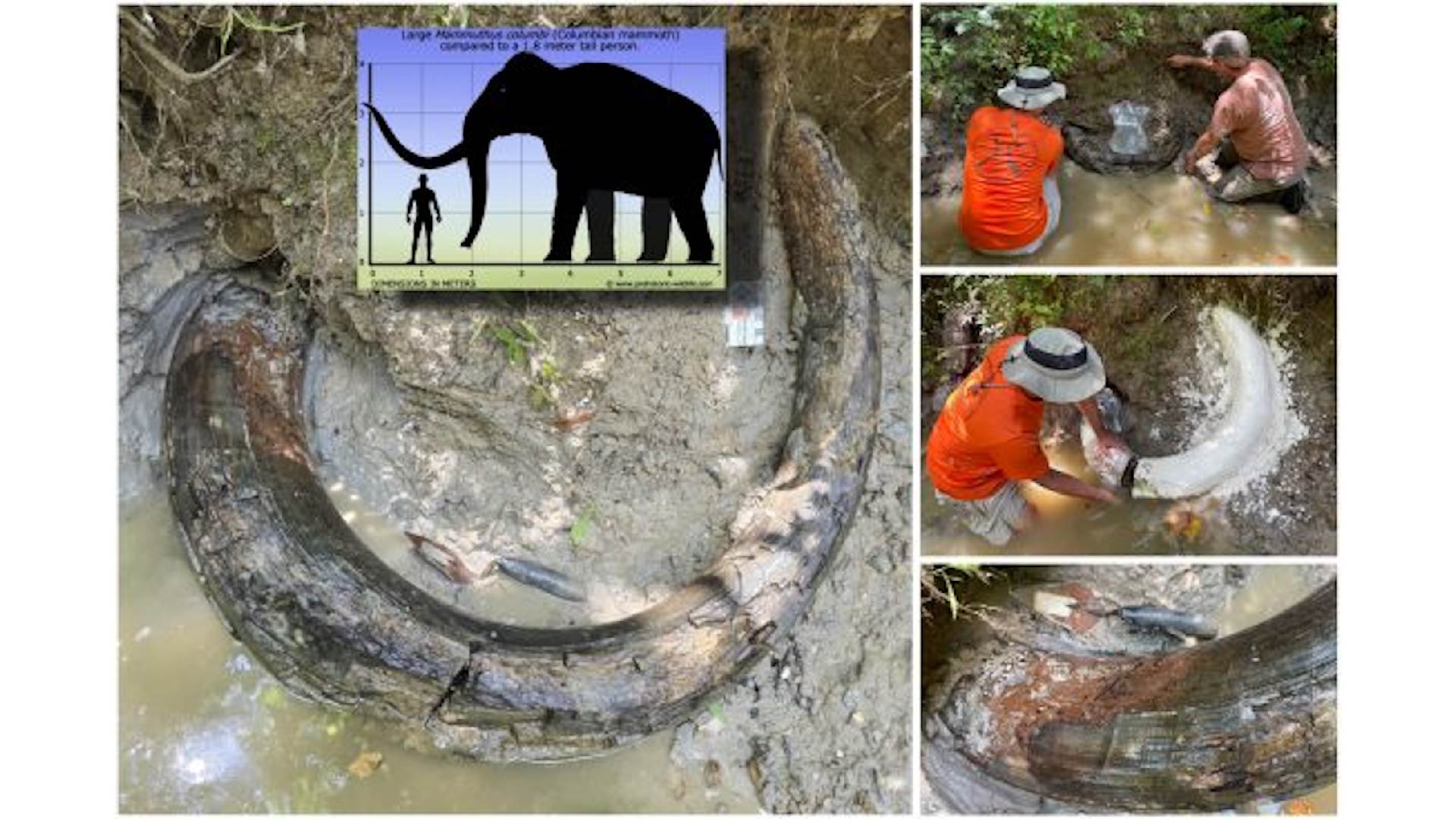
A man rambling through the wilds of Mississippi recently stumbled upon a stunningly preserved mammoth tusk sticking out of a steep cliff along a stream. The tusk is the first known mammoth fossil unearthed in the area, scientists say.
Amateur fossil collector Eddie Templeton was walking in rural Madison County in early August when he encountered the tusk partially submerged in water and stuck into the silt and clay of the streambed. He contacted the Mississippi State Geological Survey, which excavated the fossil, Mississippi Department of Environmental Quality (MDEQ) representatives said in a statement.
Survey scientists studied the 7-foot-long (2 meters), 600-pound (270 kilograms) ivory tusk, which was almost entirely intact, and confirmed it belonged to a Columbian mammoth (Mammuthus columbi).
Related: Huge, complete mammoth tusk accidentally discovered by North Dakota coal miners
"When I learned it was a mammoth and not a mastodon, I got even more excited. I've never found any part of a mammoth. I always hoped to find a part of a mammoth, but that's pretty rare down here," Templeton told the local newspaper The Clarion-Ledger.
James Starnes, a geologist with the MDEQ, told The Clarion-Ledger that tusks generally "don't preserve well" in the area.
"This is not something you see every day," he said. "This was a big, big animal."
Fossils of mammoth relatives such as American mastodons (Mammut americanum) are found throughout Mississippi because they dined on a variety of plants and so lived in several types of environments, but mammoths were choosier and grazed only in open grasslands. As a result, only two regions in the local area supported the majestic creatures.
Columbian mammoths lived during the Pleistocene epoch (2.6 million to 11,700 years ago) and crossed the Bering land bridge to enter North America by about 1.5 million years ago, according to the National Park Service (NPS). The lumbering beasts could grow to about 15 feet (4.5 m) tall at the shoulder, according to the statement, and could weigh up to 10 tons (9 metric tons).
—Ancient chromosomes from woolly mammoth discovered in 52,000-year-old freeze-dried skin
—That's a huge amount of movement for a single mammoth': Woolly female's steps retraced based on chemistry of 14,000-year-old tusk
—Girl discovers 100,000-year-old mammoth bones in Russian river while fishing with dad
Mammoths roamed across North America during the last ice age. As the glaciers melted, their habitats shrank. This, combined with human hunting, likely drove the iconic creatures to extinction, according to the NPS.
Columbian mammoths died off between 13,000 and 11,000 years ago, while their close relatives, the woolly mammoths (Mammuthus primigenius), clung on as a species for 6,000 years more.
The last known woolly mammoths lived on Wrangel Island, a Russian island off Alaska until around 3,700 years ago. A study earlier this year found that a mystery event likely killed off these last holdouts. This contradicted earlier studies, which proposed that inbreeding led to "disastrous" DNA that eventually killed them.







